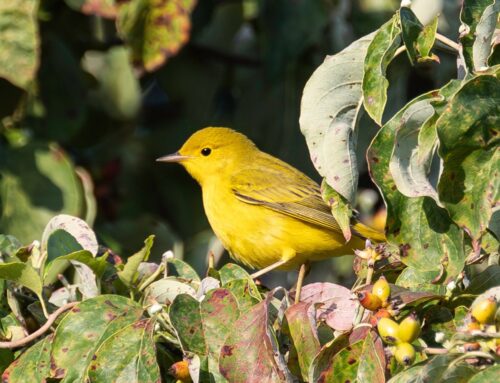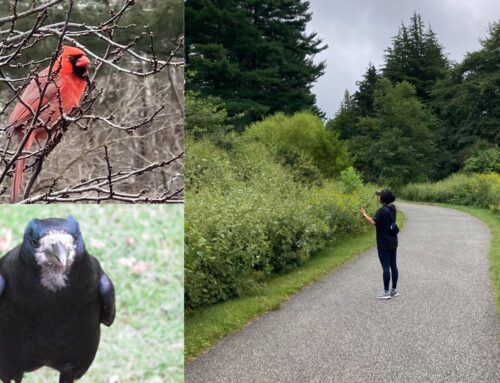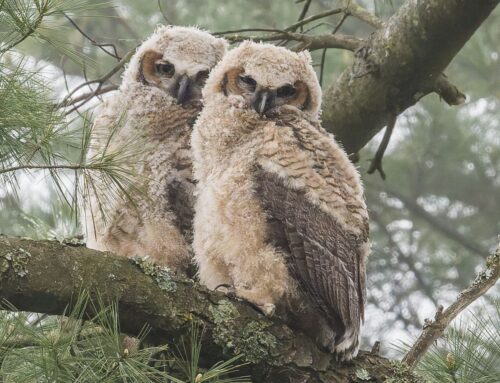Thanks to the Great Lock down of 2020, birding has become, surprisingly enough, one of the hippest hobbies around – and Tyler is the perfect place to discover birds yourself. Armed with a good set of binoculars and comfortable walking shoes, the avian scene here is highly active, so be prepared for exciting bird experiences when you visit. You’ll find songbirds around almost every corner, and may even spy a red-tail hawk sitting atop the big dead pine below the Barn.
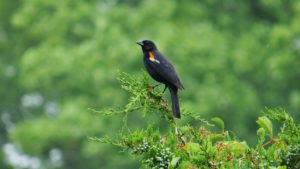
As you walk the Scenic Loop along the Painter Road side, you’ll walk through the bastion of red-wing blackbirds who frolic amidst the cattails. Make no mistake, you’re in their town. Next, check out the elevated bird boxes nearby, where this spring I found several busy families of tree swallows with their metallic blue heads and backs shining in the sun. Their young poked their heads out of the boxes, watching me as much as I was watching them.
One reason Tyler is such a bird-busy place is its abundance of habitat. Bird tour leader Sue Lucas notes that “The arboretum has so many common and rare trees that provide homes, shelter and food for bird life. There are also ponds, streams, meadows, fields, hills and many well-maintained trails. All of these qualities give the birds, visitors and other ‘critters’ a serene and peaceful environment.”
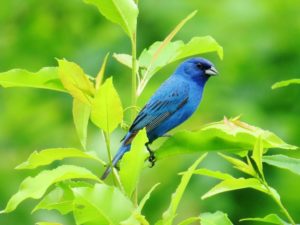
There’s also an abundance of bird varieties at Tyler. Sarah Boucas Neto, who co-leads tours, adds, “In summer, we have the breeding birds, like indigo bunting, scarlet tanager, and field sparrow, as well as eastern towhee. We get vireos, wood thrush and ovenbird breeding here, as well as Acadian flycatcher, eastern wood peewee and red-eyed vireo. In winter we get winter wren every other year, red breasted nuthatch and yellow bellied sapsucker. On occasion we also see merlins and American kestrels.” Check out this great video with Sue!
As you move deeper into the Meadow, look for goldfinches swarming around wildflowers, as well as hawks high above. Once you get close to the fence and Gates 3,4 and 5, you’ll observe bluebirds flitting from grass stem to stem or sitting on their boxes, part of the arboretum’s Blue Bird Box Program. They’re a highlight of any birding adventure to Tyler Arboretum.
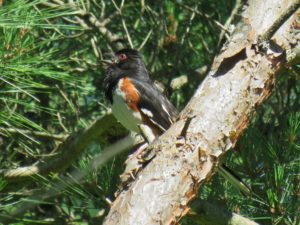
This being 2020, you can also use smartphone technology to ID birds. Avid birder David Dee uses dedicated apps when on the Tyler trails: “I use either Sibley Birds or one of the Roger Tory Peterson apps for help in identifying birds. There are plenty of situations where, because of the light or foliage, it’s difficult to get a clear sighting. Plus there are plenty of species where the females are harder to identify because their markings are less distinct. Knowing what habitats a species prefers – for instance, fields and meadows, scrubby underbrush, deep woods, tree canopy, marsh, etc. – can help you narrow the range of possibilities to a few likely species. Then if the bird is vocalizing, use the app to confirm the identity, even if a good sighting is impossible.”
If this isn’t enough, birding enthusiasts can get involved at Tyler by joining a tour group, reading up on Citizen Science projects, or simply grabbing your binoculars and heading into the woods. It’s a blissful way to spend an hour or three with our feathered friends
Resources:
Sibley Birds 2nd Edition (app)
Tobins Feed & Seed, Edgmont, PA (seeds and supplies)
Mostardi Nursery, Newtown Square, PA (birding supplies and plants)
By: Pete Prown, volunteer in Plant Records.
Photographs by Walter Hawley


